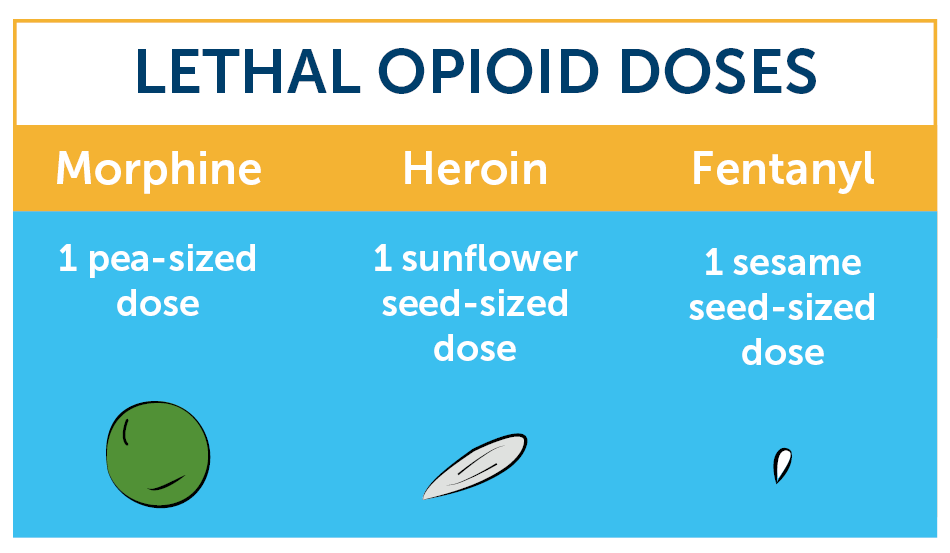Fentanyl is at the center of the opioid epidemic and is responsible for an increasing number of overdose deaths. In fact, more than 71,000 Americans died in 2022 from an overdose on synthetic opioids like fentanyl. Here’s a look at why the DEA considers it “the deadliest drug threat facing this nation,” and what’s being done to address this critical health issue. Therefore, if you or a loved one is struggling with an addiction to fentanyl, call 888.501.9865.
Fentanyl’s Medical Purpose: Pain Management
Fentanyl is a Schedule II controlled substance in the United States. A highly potent, synthetic opioid, it is only for prescription use to manage cancer, chronic pain, or post-surgical pain. Fentanyl is extremely effective at pain management as it is 100 times stronger than morphine.
Like other opioids, including oxycodone, fentanyl works by affecting the area of the brain that controls pain and emotions as well as other parts of the body. When fentanyl binds to the brain’s opioid receptors, dopamine levels increase to produce an intense state of relaxation and euphoria.
It’s also worth noting that fentanyl manufactured for medical purposes is made in a sterile environment. It is carefully blended into consistently precise doses that doctors eventually administer for legitimate medical uses.
Chemical Makeup Promotes Fentanyl’s Illicit Use
Compared to other street drugs, Fentanyl’s design and chemical makeup make it a prime target for illicit manufacturing and use.
- Potent & Fast Acting: Fentanyl is 50 times stronger than heroin in part because it binds more tightly to opioid receptors. It also binds to opioid receptors faster than other drugs. So only a small amount is needed to have a large impact.
- Highly Addictive: Fentanyl is highly addictive and can quickly lead to dependence, especially when taken in high doses or over an extended period. Once a person is addicted to fentanyl, they will experience severe withdrawal symptoms if they try to quit. This makes it challenging to break the cycle of addiction.
- Cost-Effective: Fentanyl’s potency and ease of smuggling make it a target for the illicit manufacturing of fake prescription drugs including Percocet, Adderall, and Xanax. It’s also used to lace other street drugs.
- Overdose Risk: Just two milligrams of Fentanyl, a dose the size of a single sesame seed, can prove lethal. People who take fentanyl without a prescription or who misuse the drug are at a much higher risk of overdosing. Symptoms of fentanyl overdose include difficulty breathing, extreme drowsiness, and even coma or death.
- Counterfeit Prescription Drugs: Fentanyl is often mixed with other drugs or sold in counterfeit form, making it challenging to know the exact strength and purity of the product. Fake pills have been found in all 50 states and many don’t realize they’re taking fentanyl.
- Accessibility: Fentanyl is increasingly available through illegal channels and can be obtained through online sales and smuggling. This makes it more accessible to people who may be looking for a quick and intense high, even if they are not aware of the risks involved.
Illicitly manufactured Fentanyl is made in unsanitary conditions, then mixed carelessly into random and inconsistent doses so it can be hidden in the street drug supply to increase drug dealer profits. None of these processes are regulated or undergo any quality control.
Steps Taken to Begin Addressing Epidemic
The fentanyl crisis continues to evolve as deaths from synthetic opioids continue to increase. State and federal lawmakers are taking steps to help as a result.
- Trafficking: Most Fentanyl used for illicit manufacturing is smuggled into the United States. Law enforcement has increased their work to help address this part of the issue.
- Over-the-Counter Narcan: The FDA has approved Nalaxone (Narcan) for over-the-counter, non-prescription use.
- Test Strips: Used to detect fentanyl in any form of an illicit drug – pills, powder, and injectables – their distribution and use are slowly being decriminalized at a state level.
Lawmakers focusing on this problem through a healthcare lens is significant. But the sheer scale of this epidemic is a reminder that these are the first of many ongoing steps. In the meantime, recovery options are also widely available for anyone suffering due to a fentanyl use disorder.
What Can You Do to Stay Safe?
If you are prescribed fentanyl for pain management, be sure to follow your doctor’s instructions carefully and never take more than the recommended dose. Fentanyl’s potency, addiction potential, and accessibility are why it’s become such a significant risk to public health. By understanding the risks and taking steps to stay safe, we can help prevent the devastating consequences of this deadly drug.
Begin Your Recovery from Fentanyl with Brightview
If you or someone you know is currently dealing with any substance use disorder, BrightView can help you start on the road to recovery. Addiction is a chronic disease, and recovery is possible with the right treatment and support.
Learn more about our proven outpatient treatment program and how our comprehensive approach to treatment helps people change their lives. Contact us today at 833-510-4357 or schedule an appointment at one of our treatment centers.

